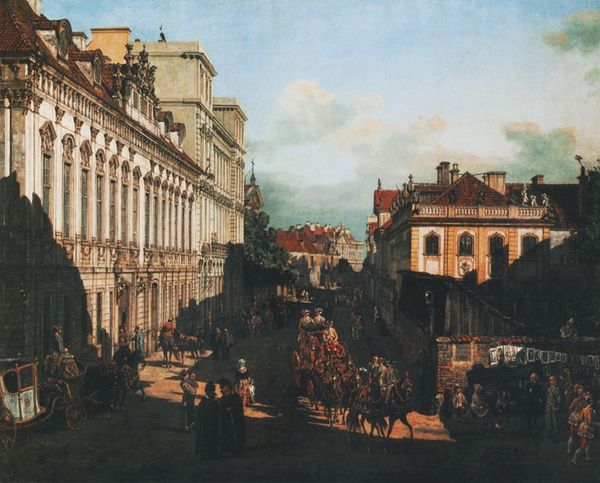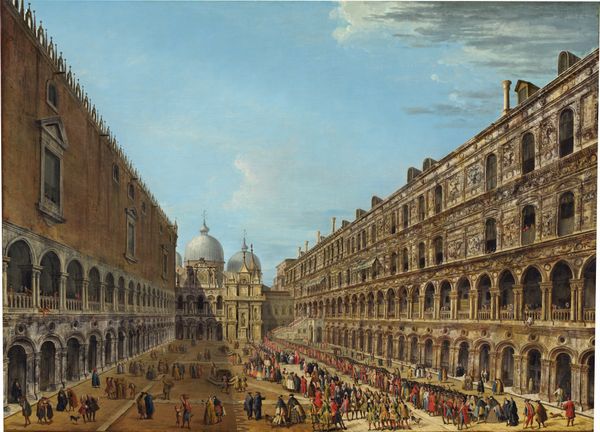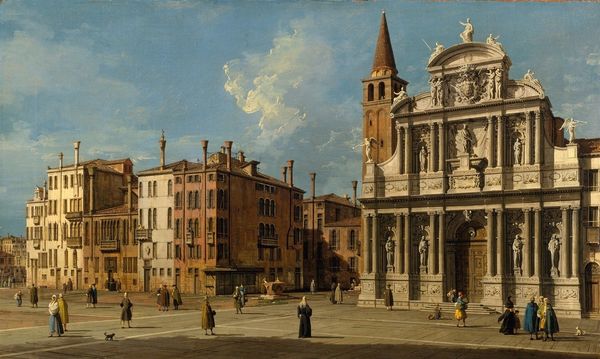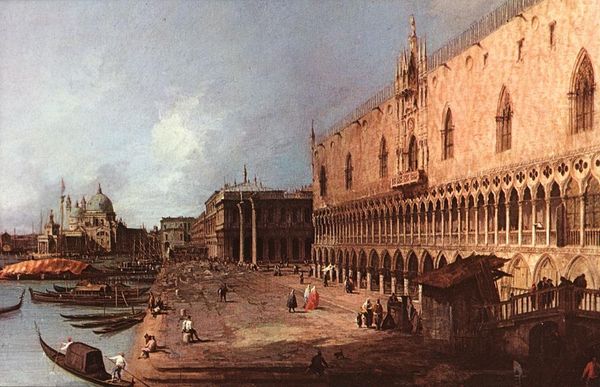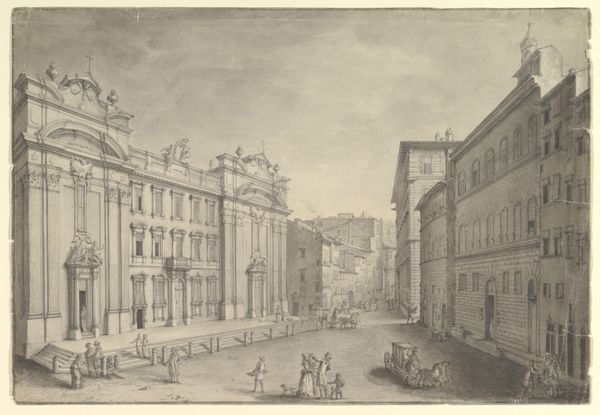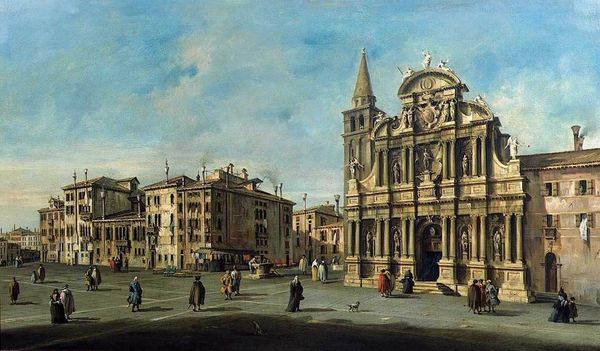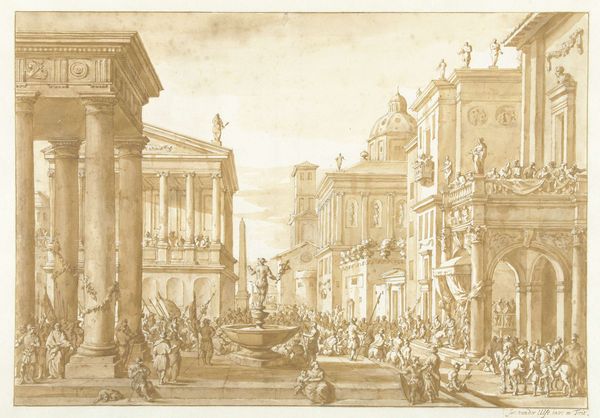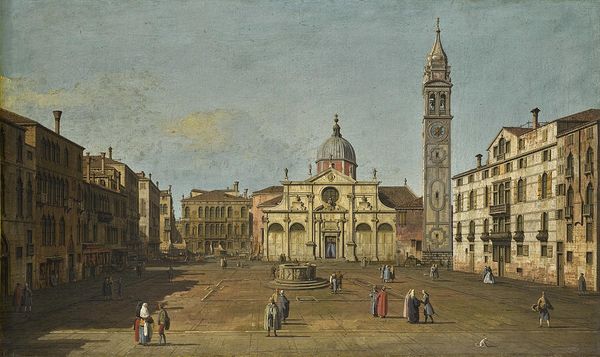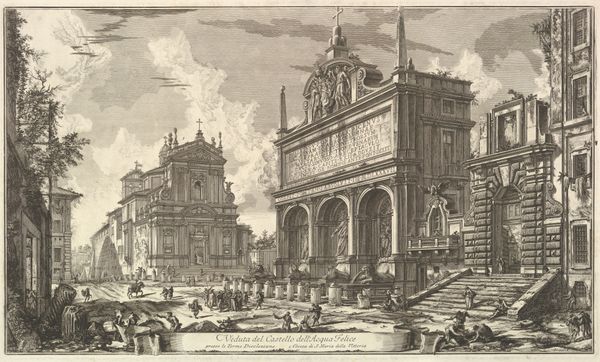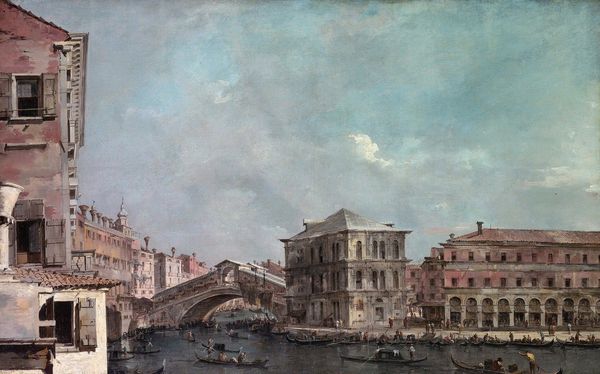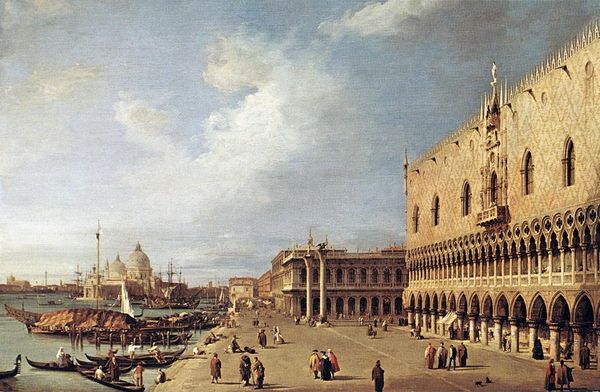
View of Vienna, square in front of the university, seen from the southeast off the great hall of the University 1759
0:00
0:00
painting, oil-paint, architecture
#
baroque
#
painting
#
street view
#
oil-paint
#
oil painting
#
arch
#
square
#
cityscape
#
genre-painting
#
academic-art
#
architecture
#
building
Copyright: Public domain
Editor: Here we have Bernardo Bellotto's "View of Vienna, square in front of the university, seen from the southeast off the great hall of the University" from 1759, rendered in oil paint. It’s quite a detailed cityscape. What stands out to you in this painting? Curator: I'm struck by the sheer amount of labor embedded within this seemingly simple scene. Consider the mining and processing of the pigments themselves, the crafting of the brushes and canvas. Even the architectural construction of Vienna—its very stones laid by human hands—contributes to the material reality represented. Editor: So, you’re focusing on the…ingredients of the painting, and the ingredients of Vienna? Curator: Precisely. Think about the social hierarchy reflected in the materials. The wealthy patron commissioning this view, the tradesmen constructing those grand buildings. Bellotto's painstaking realism only heightens the awareness of this invested labor. The transportation, too. Look at those carriages. Who owned them, and how much labor and raw materials did they take to produce? What resources allowed some people to ride while others walked? Editor: That’s…a completely different way of seeing it than I imagined! I was just thinking about perspective and architectural detail, the usual art history stuff. Curator: And it’s so easy to stop there. But by attending to the processes behind Bellotto’s art and Bellotto's Vienna, we unveil a history not only of aesthetic representation but of societal production, consumption and labour. What have you gotten out of our exchange, do you think? Editor: I will never look at an oil painting of a city the same way again.
Comments
No comments
Be the first to comment and join the conversation on the ultimate creative platform.
